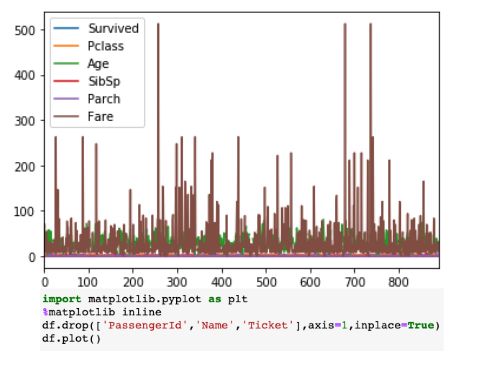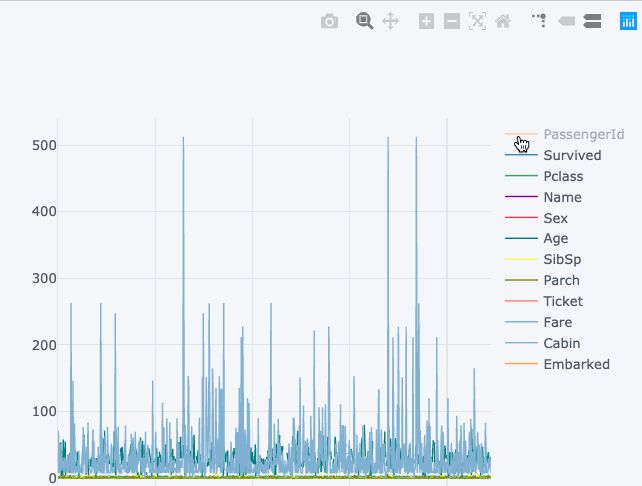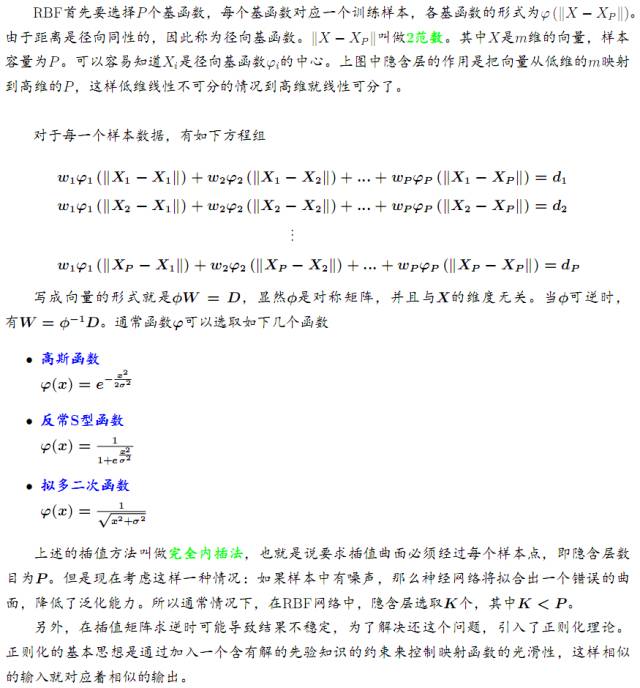- python类的定义与使用
菜鸟驿站2020
python
class01.py代码如下classTicket():#类的名称首字母大写#在类里定义的变量称为属性,第一个属性必须是selfdef__init__(self,checi,fstation,tstation,fdate,ftime,ttime,notes):self.checi=checiself.fstation=fstationself.tstation=tstationself.fdate
- Python爬虫设置代理IP
菜鸟驿站2020
python
配置代理ipfrombs4importBeautifulSoupimportrequestsimportrandom#从ip代理网站获取ip列表defget_ip_list(url,headers):web_data=requests.get(url,headers=headers)soup=BeautifulSoup(web_data.text,'lxml')ips=soup.find_all(
- Tensorflow 回归模型 FLASK + DOCKER 部署 至 Ubuntu 虚拟机
准备工作:安装虚拟机,安装ubuntu,安装python3.x、pip和对应版本的tensorflow和其他库文件,安装docker。注意事项:1.windows系统运行的模型文件不能直接运行到虚拟机上,需在虚拟机上重新运行并生成模型文件2.虚拟机网络状态改为桥接Flask代码如下:fromflaskimportFlask,request,jsonifyimportpickleimportnump
- AI Agent开发第81课-企业AI落地15大陷阱与破局之道
TGITCIC
AIAgent开发大全人工智能AI落地企业AI落地大模型落地企业大模型落地
1.技术至上:忽视业务融合1.1业务需求驱动的本质AI项目的核心价值在于解决业务痛点,而非技术炫技。某银行通过成熟的人脸识别技术将坏账率降低15%,其成功源于对业务场景的精准把握。技术选择必须基于业务需求的优先级排序,而非单纯追求算法复杂度。当零售企业用AI优化供应链时,其目标是提升库存周转率0.5个百分点,而非发表顶会论文。1.2技术与业务的错位某科技公司投入千万研发智能客服系统,最终因响应准确
- Kafka 核心原理篇:深入理解分布式消息系统的内核机制
真实的菜
kafka分布式kafkalinq
Kafka核心原理篇:深入理解分布式消息系统的内核机制文章目录Kafka核心原理篇:深入理解分布式消息系统的内核机制消息存储与持久化机制日志分段存储策略️**分段文件结构****索引机制详解**高效的磁盘读写与数据压缩算法**零拷贝技术(Zero-Copy)****数据压缩策略****页缓存优化**数据过期与清理策略⏰**基于时间的清理****基于大小的清理**️**日志压缩(LogCompact
- 大模型-FlashAttention 算法分析
清风lsq
大模型推理算法算法大模型推理LLMflashattention
一、FlashAttention的概述FlashAttention是一种IO感知精确注意力算法。通过感知显存读取/写入,FlashAttention的运行速度比PyTorch标准Attention快了2-4倍,所需内存也仅是其5%-20%。随着Transformer变得越来越大、越来越深,但它在长序列上仍然处理的很慢、且耗费内存。(自注意力时间和显存复杂度与序列长度成二次方),现有近似注意力方法,
- 10个可以快速用Python进行数据分析的小技巧_python 通径分析
2401_86043917
python数据分析开发语言
df.iplot()df.iplot()vsdf.plot()右侧的可视
- 【Python多线程】
晟翰逸闻
Pythonpython
文章目录前言一、Python等待event.set二、pythonracecondition和lock使用使用锁(Lock)三.pythonDeadLock使用等综合运用总结前言这篇技术文章讨论了多线程编程中的几个重要概念。它首先介绍了等待事件的使用,并强调了避免使用“ForLoop&Sleep”进行等待的重要性。接着,文档解释了竞态条件,并提供了处理共享资源的建议,即在使用共享资源时进行加锁和解
- 【pycharm专业版】【如何远程配置Python解释器】【SSH】
资源存储库
pythonpycharm
Wejustlookedatconfiguringalocalinterpreter.Butwedon’talwayshavea“local”environment.Sometimes–andincreasinglyoften–ourenvironmentisoverthere.我们刚刚看了配置本地解释器。但我们并不总是有一个“本地”的环境。有时候–而且越来越多的时候–我们的环境就在那里。Let’
- python线程同步锁_python的Lock锁,线程同步
weixin_39649660
python线程同步锁
一、Lock锁凡是存在共享资源争抢的地方都可以使用锁,从而保证只有一个使用者可以完全使用这个资源一旦线程获得锁,其他试图获取锁的线程将被阻塞acquire(blocking=True,timeout=-1):默认阻塞,阻塞可以设置超时时间,非阻塞时,timeout禁止设置,成功获取锁,返回True,否则返回Falsereleas():释放锁,可以从任何线程调用释放,已上锁的锁,会被重置为unloc
- 并发与并行:python多线程详解
m_merlon
python服务器Python进阶教程python
简介多进程和多线程都可以执行多个任务,线程是进程的一部分。线程的特点是线程之间可以共享内存和变量,资源消耗少,缺点是线程之间的同步和加锁比较麻烦。在cpython中,截止到3.12为止依然存在全局解释器锁(GIL),不能发挥多核的优势,因此python多线程更适合IO密集型任务并发提高效率,CPU密集型任务推荐使用多进程并行解决。注:此说法仅适用于python(如:c++的多线程可以利用到多核并行
- python多线程:生产者与消费者,高级锁定Condition、queue队列使用案例与注意事项
网小鱼的学习笔记
Pythonpythonjava大数据
高级锁定这是python中的另一种中锁定,就像是它的名字一样是可以有条件的condition,首先程序使用acquire进入锁定状态,如果需要符合一定的条件才处理数据,此时可以调用wait,让自己进入睡眠状态,程序设计时候需要用notify通知其他线程,然后放弃锁定release此时其他再等待的线程因为受到通知notify,这时候被激活了,就开始运作。生产者与消费者的设计程序用producer方法
- python协程与异步并发,同步与阻塞,异步与非阻塞,Python异步IO、协程与同步原语介绍,协程的优势和劣势
网小鱼的学习笔记
Pythonpython服务器开发语言
协程与异步软件系统的并发使用异步IO,无非是我们提的软件系统的并发,这个软件系统,可以是网络爬虫,也可以是web服务等并发的方式有多种,多线程,多进程,异步IO等多线程和多进程更多应用于CPU密集型的场景,比如科学计算的事件都消耗在CPU上面,利用多核CPU来分担计算任务多线程和多进程之间的场景切换和通讯代价很高,不适合IO密集型的场景,而异步IO就是非常适合IO密集型的场景,例如网络爬虫和web
- 使用Python和FFmpeg实现RGB到YUV444的转换
追逐程序梦想者
ffmpegpython开发语言
使用Python和FFmpeg实现RGB到YUV444的转换如果你需要将RGB图像转换为YUV444格式的图像,那么本文将为你提供一个简单且可靠的方法。我们将使用Python和FFmpeg来完成这个任务。首先,让我们了解一下什么是RGB和YUV。RGB表示红、绿、蓝三种颜色的组合,是最常见的图像格式之一。另一方面,YUV是一种亮度-色度编码,用于视频压缩和传输,它将图像分成明亮度(Y)和色度(U和
- 如何利用ssh使得pycharm连接服务器的docker容器内部环境
SoulMatter
docker容器运维pycharmssh
如题,想要配置服务器的python编译器环境,来查看容器内部环境安装的包的情况。首先,需要确定容器的状态,使用dockerps查看,只有ports那一栏有内容才证明容器暴露了端口出来。如果没有暴露,就需要将容器打包成镜像,然后将镜像再启动一个容器才可以。步骤如下:如何打包镜像:(里面包括了将镜像从A服务器远程传输到B服务器后使用的方法,如果是在本服务器自己使用,那么忽略远程传输的步骤)#创建一个基
- python多线程高级锁知识:Semaphore信号量、Barrier栅栏在线程中的使用、高级event事件
网小鱼的学习笔记
Pythonpython开发语言
Semaphore信号量Semaphore信号量可以翻译为信号量,这个信号量代表了最多允许线程访问的数量,可以使用Semaphore(n)设定,n是信号数量,这是一个更高级的锁机制,Semaphore管理一个计数器,每次使用acquire计数器将会减一,表示可以允许线程访问的数量少了一个,使用release计数器加1,表示可允许线程访问的数量多了一个,只有占用信号量的线程数量超过信号量时候才会阻塞
- python:assert和raise区别
Covirtue
python
assert和raise是在错误处理方面的两个不同的用法。assert是一种断言语句,用于在代码中检查一个条件是否为True。如果条件为False,它会引发一个AssertionError异常。assert主要用于调试目的,以确保代码的正确性。当代码被优化时,assert语句可能会被自动忽略。例如:```pythonx=5assertx>0,"x必须大于0"```如果x不大于0,将引发Assert
- Python读取红外图像 - 实现红外图像的读取和处理
程序员杨弋
Python全栈工程师学习指南python计算机视觉opencv
在许多工业、安防等领域中,红外图像无疑是一种不可或缺的重要资源,因此,能够快速、准确地读取和处理红外图像,对于工程师和科学家来说非常必要。Python作为一种强大的编程语言,提供了丰富的图像处理库,允许我们轻松地读取和处理红外图像,本文将介绍如何使用Python读取红外图像,并对其进行简单的处理。首先需要准备一个目标红外图像文件,这里我们以bmp格式的文件为例:importcv2img=cv2.i
- python raise和assert的区别
40kuai
python中raise和assert的区别一、使用raise抛出异常python可以自动触发异常,raise(内置函数)的定义为显示的抛出异常,用户可以使用raise进行判断,显式的引发异常,raise执行后程序将不再向下执行。式例:#!/usr/bin/envpython#-*-coding:utf-8-*-__author__='40kuai'books_dict={'name':'pyth
- python解析风云4B生成真彩云图
小天丶1
气象数据处理python开发语言
文章目录概要话不多数开整小结概要真彩色云图需要根据通道Channel01,通道Channel02,通道Channel03进行通道融合处理,大致思路:三个通道对于RGB三个颜色管道,然后合并成一个三通道图像,其余云图在历史文档里有python解析风云4B,生成红外云图、可见光云图、水汽云图https://blog.csdn.net/qq_38197010/article/details/146549
- java运行python脚本同时实现传参响应接收
小天丶1
javapythonjava开发语言
提示:文章写完后,目录可以自动生成,如何生成可参考右边的帮助文档文章目录前言一、java部分示例二、python代码示例前言提示:这里可以添加本文要记录的大概内容:主要帮助从事java开发却涉及一些计算操作的时候发现没有python库更高效的解决方式提示:以下是本篇文章正文内容,下面案例可供参考一、java部分示例//调用Python脚本//pythonl路径pythonl路径Stringpyth
- 2025华为od机试真题B卷【停车场费用统计】Python实现
MISAYAONE
OD机试华为odpython开发语言华为od机试2025B卷
目录题目思路Code题目停车场统计当日总收费,包月的车不统计,不包月的车半个小时收一块钱,不满半小时不收钱,如果超过半小时,零头不满半小时按半小时算,每天11:30-13:30时间段不收钱,如果一辆车停车时间超过8小时后不收费。现提供停车场进出车辆的统计信息,需要你来计算停车场统计当日的总收费。输入描述第一行输入一个整数n表示今日进出停车场的包月的车辆数下一个行输入包月车的车牌号,以空格分割接下来
- 基于大模型的胆囊结石全流程预测与诊疗系统技术方案
目录一、系统架构设计1.1数据采集与预处理模块1.2大模型核心算法模块二、全流程系统流程图三、系统集成方案3.1模块交互流程3.2数据流示意图四、系统部署拓扑图五、核心模块实现细节5.1术前风险预测算法5.2术中监测算法5.3术后并发症预测模型六、关键技术验证方案6.1模型验证流程6.2临床试验设计框架七、典型应用场景流程7.1腹腔镜手术决策流程一、系统架构设计1.1数据采集与预处理模块#数据采集
- 基于大模型的胆囊结石全流程预测与诊疗系统技术方案大纲
LCG元
大模型医疗研究-方案大纲人工智能机器学习深度学习方案大纲
目录一、引言二、系统架构设计(一)数据采集与预处理模块(二)大模型核心算法模块(三)应用层功能模块三、全流程系统流程图四、术前阶段详细方案(一)患者信息采集与整合(二)胆囊结石风险预测(三)手术方案制定辅助(四)麻醉方案规划五、术中阶段详细方案(一)实时数据监测与传输(二)手术进程智能辅助六、术后阶段详细方案(一)术后恢复情况预测(二)并发症风险预测(三)护理方案调整(四)康复指导七、并发症风险预
- 成为高级Python开发人员的完整学习路线与核心知识体系
引言Python已成为全球最受欢迎的编程语言之一,其简洁的语法和强大的生态系统使其在数据科学、Web开发、自动化、人工智能等领域占据重要地位。然而,从初级Python程序员到真正的高级开发人员,需要掌握一系列深入的知识点和实践经验。本文将详细介绍成为高级Python开发人员必备的核心知识体系,并提供系统化的学习资源,帮助你规划专业发展路径。第一部分:Python语言基础进阶1.Python语言特性
- 【AI】闭环反馈:构建从用户处学习的人工智能
秋说
AI广延人工智能AI
文章目录前言AI产品性能的双重视角:模型指标vs用户信号模型指标:AI系统的“内部视角”用户信号:AI产品的“外部视角”用户信号类型用户信号的价值模型指标为何难以独立支撑产品成功如何设计AI产品的全面反馈闭环一、统一成功标准:模型指标+用户价值二、用户信号的数据采集策略三、整合多源数据流四、分析与洞察从反馈到改进:迭代驱动的闭环循环一、识别并优先解决核心问题二、将用户信号转化为模型改进方向三、产品
- 2025.06.11华为暑期实习机试真题【物流运输】Java/Python/C++/JS/C 实现
MISAYAONE
python华为java华为暑期实习机试c++
目录题目思路Code题目物流公司每天都要处理很多物流的运输工作,整个城市共有N个地点。共有N-1条公路,每2个地点之间都能通过公路连通。物流公司总部位于1号地点。今天有一辆物流运偷车共有M条物流运输任务,物流运输车每天的工作流程如下:先要从总部出发去收取所有的寄件货物,收到所有货物后回到总部扫描货物,再从总部出发将货物送至所有的送件地址,送完后最终回到总部,算作完成了今天的运输工作,请问该辆物流运
- AppML 案例简介
沐知全栈开发
开发语言
AppML案例简介引言AppML,全称为“应用程序机器学习”,是一种将机器学习技术与移动应用开发相结合的技术框架。它旨在简化移动应用的机器学习功能集成,使得开发者无需深入了解复杂的机器学习算法,即可将强大的AI功能引入他们的应用中。本文将简要介绍AppML的一些成功案例,展示其在不同领域的应用和价值。AppML案例一:健康监测应用案例概述:一款名为“HealthMate”的健康监测应用利用AppM
- Y-Combinator推导的Golang描述
武昌库里写JAVA
面试题汇总与解析springbootvue.js宠物管理课程设计java
缘起在做计算的本质指称语义的时候,遇到了需要在Python匿名递归调用。Python的lambda表达式本身不支持,需要借助Y-Combinator技术实现。于是研究了下Y-Combinator。中文世界了很多Blog介绍和推导Y-Combinator的文章。然而大部分的文章都省略了推导的关键步骤和推导的依据。仿佛读者都默认已经懂得Y-Combinator了。最后我在Youtube上找到了Ruby
- PL-SLAM: Real-Time Monocular Visual SLAM with Points and Lines
PL-SLAM文章目录PL-SLAM摘要系统介绍综述方法综述LINE-BASEDSLAM一、基于线的SLAM二、基于线和点的BA三、全局重定位使用线条初始化地图实验结果说明位姿求解三角化LSD直线检测算法**一、核心原理**⚙️**二、实现方法****三、应用场景**⚖️**四、优缺点与优化****优缺点对比****总结**End摘要译文——众所周知,低纹理场景是依赖点对应的几何计算机视觉算法的主
- 桌面上有多个球在同时运动,怎么实现球之间不交叉,即碰撞?
换个号韩国红果果
html小球碰撞
稍微想了一下,然后解决了很多bug,最后终于把它实现了。其实原理很简单。在每改变一个小球的x y坐标后,遍历整个在dom树中的其他小球,看一下它们与当前小球的距离是否小于球半径的两倍?若小于说明下一次绘制该小球(设为a)前要把他的方向变为原来相反方向(与a要碰撞的小球设为b),即假如当前小球的距离小于球半径的两倍的话,马上改变当前小球方向。那么下一次绘制也是先绘制b,再绘制a,由于a的方向已经改变
- 《高性能HTML5》读后整理的Web性能优化内容
白糖_
html5
读后感
先说说《高性能HTML5》这本书的读后感吧,个人觉得这本书前两章跟书的标题完全搭不上关系,或者说只能算是讲解了“高性能”这三个字,HTML5完全不见踪影。个人觉得作者应该首先把HTML5的大菜拿出来讲一讲,再去分析性能优化的内容,这样才会有吸引力。因为只是在线试读,没有机会看后面的内容,所以不胡乱评价了。
- [JShop]Spring MVC的RequestContextHolder使用误区
dinguangx
jeeshop商城系统jshop电商系统
在spring mvc中,为了随时都能取到当前请求的request对象,可以通过RequestContextHolder的静态方法getRequestAttributes()获取Request相关的变量,如request, response等。 在jshop中,对RequestContextHolder的
- 算法之时间复杂度
周凡杨
java算法时间复杂度效率
在
计算机科学 中,
算法 的时间复杂度是一个
函数 ,它定量描述了该算法的运行时间。这是一个关于代表算法输入值的
字符串 的长度的函数。时间复杂度常用
大O符号 表述,不包括这个函数的低阶项和首项系数。使用这种方式时,时间复杂度可被称为是
渐近 的,它考察当输入值大小趋近无穷时的情况。
这样用大写O()来体现算法时间复杂度的记法,
- Java事务处理
g21121
java
一、什么是Java事务 通常的观念认为,事务仅与数据库相关。 事务必须服从ISO/IEC所制定的ACID原则。ACID是原子性(atomicity)、一致性(consistency)、隔离性(isolation)和持久性(durability)的缩写。事务的原子性表示事务执行过程中的任何失败都将导致事务所做的任何修改失效。一致性表示当事务执行失败时,所有被该事务影响的数据都应该恢复到事务执行前的状
- Linux awk命令详解
510888780
linux
一. AWK 说明
awk是一种编程语言,用于在linux/unix下对文本和数据进行处理。数据可以来自标准输入、一个或多个文件,或其它命令的输出。它支持用户自定义函数和动态正则表达式等先进功能,是linux/unix下的一个强大编程工具。它在命令行中使用,但更多是作为脚本来使用。
awk的处理文本和数据的方式:它逐行扫描文件,从第一行到
- android permission
布衣凌宇
Permission
<uses-permission android:name="android.permission.ACCESS_CHECKIN_PROPERTIES" ></uses-permission>允许读写访问"properties"表在checkin数据库中,改值可以修改上传
<uses-permission android:na
- Oracle和谷歌Java Android官司将推迟
aijuans
javaoracle
北京时间 10 月 7 日,据国外媒体报道,Oracle 和谷歌之间一场等待已久的官司可能会推迟至 10 月 17 日以后进行,这场官司的内容是 Android 操作系统所谓的 Java 专利权之争。本案法官 William Alsup 称根据专利权专家 Florian Mueller 的预测,谷歌 Oracle 案很可能会被推迟。 该案中的第二波辩护被安排在 10 月 17 日出庭,从目前看来
- linux shell 常用命令
antlove
linuxshellcommand
grep [options] [regex] [files]
/var/root # grep -n "o" *
hello.c:1:/* This C source can be compiled with:
- Java解析XML配置数据库连接(DOM技术连接 SAX技术连接)
百合不是茶
sax技术Java解析xml文档dom技术XML配置数据库连接
XML配置数据库文件的连接其实是个很简单的问题,为什么到现在才写出来主要是昨天在网上看了别人写的,然后一直陷入其中,最后发现不能自拔 所以今天决定自己完成 ,,,,现将代码与思路贴出来供大家一起学习
XML配置数据库的连接主要技术点的博客;
JDBC编程 : JDBC连接数据库
DOM解析XML: DOM解析XML文件
SA
- underscore.js 学习(二)
bijian1013
JavaScriptunderscore
Array Functions 所有数组函数对参数对象一样适用。1.first _.first(array, [n]) 别名: head, take 返回array的第一个元素,设置了参数n,就
- plSql介绍
bijian1013
oracle数据库plsql
/*
* PL/SQL 程序设计学习笔记
* 学习plSql介绍.pdf
* 时间:2010-10-05
*/
--创建DEPT表
create table DEPT
(
DEPTNO NUMBER(10),
DNAME NVARCHAR2(255),
LOC NVARCHAR2(255)
)
delete dept;
select
- 【Nginx一】Nginx安装与总体介绍
bit1129
nginx
启动、停止、重新加载Nginx
nginx 启动Nginx服务器,不需要任何参数u
nginx -s stop 快速(强制)关系Nginx服务器
nginx -s quit 优雅的关闭Nginx服务器
nginx -s reload 重新加载Nginx服务器的配置文件
nginx -s reopen 重新打开Nginx日志文件
- spring mvc开发中浏览器兼容的奇怪问题
bitray
jqueryAjaxspringMVC浏览器上传文件
最近个人开发一个小的OA项目,属于复习阶段.使用的技术主要是spring mvc作为前端框架,mybatis作为数据库持久化技术.前台使用jquery和一些jquery的插件.
在开发到中间阶段时候发现自己好像忽略了一个小问题,整个项目一直在firefox下测试,没有在IE下测试,不确定是否会出现兼容问题.由于jquer
- Lua的io库函数列表
ronin47
lua io
1、io表调用方式:使用io表,io.open将返回指定文件的描述,并且所有的操作将围绕这个文件描述
io表同样提供三种预定义的文件描述io.stdin,io.stdout,io.stderr
2、文件句柄直接调用方式,即使用file:XXX()函数方式进行操作,其中file为io.open()返回的文件句柄
多数I/O函数调用失败时返回nil加错误信息,有些函数成功时返回nil
- java-26-左旋转字符串
bylijinnan
java
public class LeftRotateString {
/**
* Q 26 左旋转字符串
* 题目:定义字符串的左旋转操作:把字符串前面的若干个字符移动到字符串的尾部。
* 如把字符串abcdef左旋转2位得到字符串cdefab。
* 请实现字符串左旋转的函数。要求时间对长度为n的字符串操作的复杂度为O(n),辅助内存为O(1)。
*/
pu
- 《vi中的替换艺术》-linux命令五分钟系列之十一
cfyme
linux命令
vi方面的内容不知道分类到哪里好,就放到《Linux命令五分钟系列》里吧!
今天编程,关于栈的一个小例子,其间我需要把”S.”替换为”S->”(替换不包括双引号)。
其实这个不难,不过我觉得应该总结一下vi里的替换技术了,以备以后查阅。
1
所有替换方案都要在冒号“:”状态下书写。
2
如果想将abc替换为xyz,那么就这样
:s/abc/xyz/
不过要特别
- [轨道与计算]新的并行计算架构
comsci
并行计算
我在进行流程引擎循环反馈试验的过程中,发现一个有趣的事情。。。如果我们在流程图的每个节点中嵌入一个双向循环代码段,而整个流程中又充满着很多并行路由,每个并行路由中又包含着一些并行节点,那么当整个流程图开始循环反馈过程的时候,这个流程图的运行过程是否变成一个并行计算的架构呢?
- 重复执行某段代码
dai_lm
android
用handler就可以了
private Handler handler = new Handler();
private Runnable runnable = new Runnable() {
public void run() {
update();
handler.postDelayed(this, 5000);
}
};
开始计时
h
- Java实现堆栈(list实现)
datageek
数据结构——堆栈
public interface IStack<T> {
//元素出栈,并返回出栈元素
public T pop();
//元素入栈
public void push(T element);
//获取栈顶元素
public T peek();
//判断栈是否为空
public boolean isEmpty
- 四大备份MySql数据库方法及可能遇到的问题
dcj3sjt126com
DBbackup
一:通过备份王等软件进行备份前台进不去?
用备份王等软件进行备份是大多老站长的选择,这种方法方便快捷,只要上传备份软件到空间一步步操作就可以,但是许多刚接触备份王软件的客用户来说还原后会出现一个问题:因为新老空间数据库用户名和密码不统一,网站文件打包过来后因没有修改连接文件,还原数据库是好了,可是前台会提示数据库连接错误,网站从而出现打不开的情况。
解决方法:学会修改网站配置文件,大多是由co
- github做webhooks:[1]钩子触发是否成功测试
dcj3sjt126com
githubgitwebhook
转自: http://jingyan.baidu.com/article/5d6edee228c88899ebdeec47.html
github和svn一样有钩子的功能,而且更加强大。例如我做的是最常见的push操作触发的钩子操作,则每次更新之后的钩子操作记录都会在github的控制板可以看到!
工具/原料
github
方法/步骤
- ">的作用" target="_blank">JSP中的作用
蕃薯耀
JSP中<base href="<%=basePath%>">的作用
>>>>>>>>>>>>>>>>>>>>>>>>>>>>>>>>>>>
- linux下SAMBA服务安装与配置
hanqunfeng
linux
局域网使用的文件共享服务。
一.安装包:
rpm -qa | grep samba
samba-3.6.9-151.el6.x86_64
samba-common-3.6.9-151.el6.x86_64
samba-winbind-3.6.9-151.el6.x86_64
samba-client-3.6.9-151.el6.x86_64
samba-winbind-clients
- guava cache
IXHONG
cache
缓存,在我们日常开发中是必不可少的一种解决性能问题的方法。简单的说,cache 就是为了提升系统性能而开辟的一块内存空间。
缓存的主要作用是暂时在内存中保存业务系统的数据处理结果,并且等待下次访问使用。在日常开发的很多场合,由于受限于硬盘IO的性能或者我们自身业务系统的数据处理和获取可能非常费时,当我们发现我们的系统这个数据请求量很大的时候,频繁的IO和频繁的逻辑处理会导致硬盘和CPU资源的
- Query的开始--全局变量,noconflict和兼容各种js的初始化方法
kvhur
JavaScriptjquerycss
这个是整个jQuery代码的开始,里面包含了对不同环境的js进行的处理,例如普通环境,Nodejs,和requiredJs的处理方法。 还有jQuery生成$, jQuery全局变量的代码和noConflict代码详解 完整资源:
http://www.gbtags.com/gb/share/5640.htm jQuery 源码:
(
- 美国人的福利和中国人的储蓄
nannan408
今天看了篇文章,震动很大,说的是美国的福利。
美国医院的无偿入院真的是个好措施。小小的改善,对于社会是大大的信心。小孩,税费等,政府不收反补,真的体现了人文主义。
美国这么高的社会保障会不会使人变懒?答案是否定的。正因为政府解决了后顾之忧,人们才得以倾尽精力去做一些有创造力,更造福社会的事情,这竟成了美国社会思想、人
- N阶行列式计算(JAVA)
qiuwanchi
N阶行列式计算
package gaodai;
import java.util.List;
/**
* N阶行列式计算
* @author 邱万迟
*
*/
public class DeterminantCalculation {
public DeterminantCalculation(List<List<Double>> determina
- C语言算法之打渔晒网问题
qiufeihu
c算法
如果一个渔夫从2011年1月1日开始每三天打一次渔,两天晒一次网,编程实现当输入2011年1月1日以后任意一天,输出该渔夫是在打渔还是在晒网。
代码如下:
#include <stdio.h>
int leap(int a) /*自定义函数leap()用来指定输入的年份是否为闰年*/
{
if((a%4 == 0 && a%100 != 0
- XML中DOCTYPE字段的解析
wyzuomumu
xml
DTD声明始终以!DOCTYPE开头,空一格后跟着文档根元素的名称,如果是内部DTD,则再空一格出现[],在中括号中是文档类型定义的内容. 而对于外部DTD,则又分为私有DTD与公共DTD,私有DTD使用SYSTEM表示,接着是外部DTD的URL. 而公共DTD则使用PUBLIC,接着是DTD公共名称,接着是DTD的URL.
私有DTD
<!DOCTYPErootSYST

